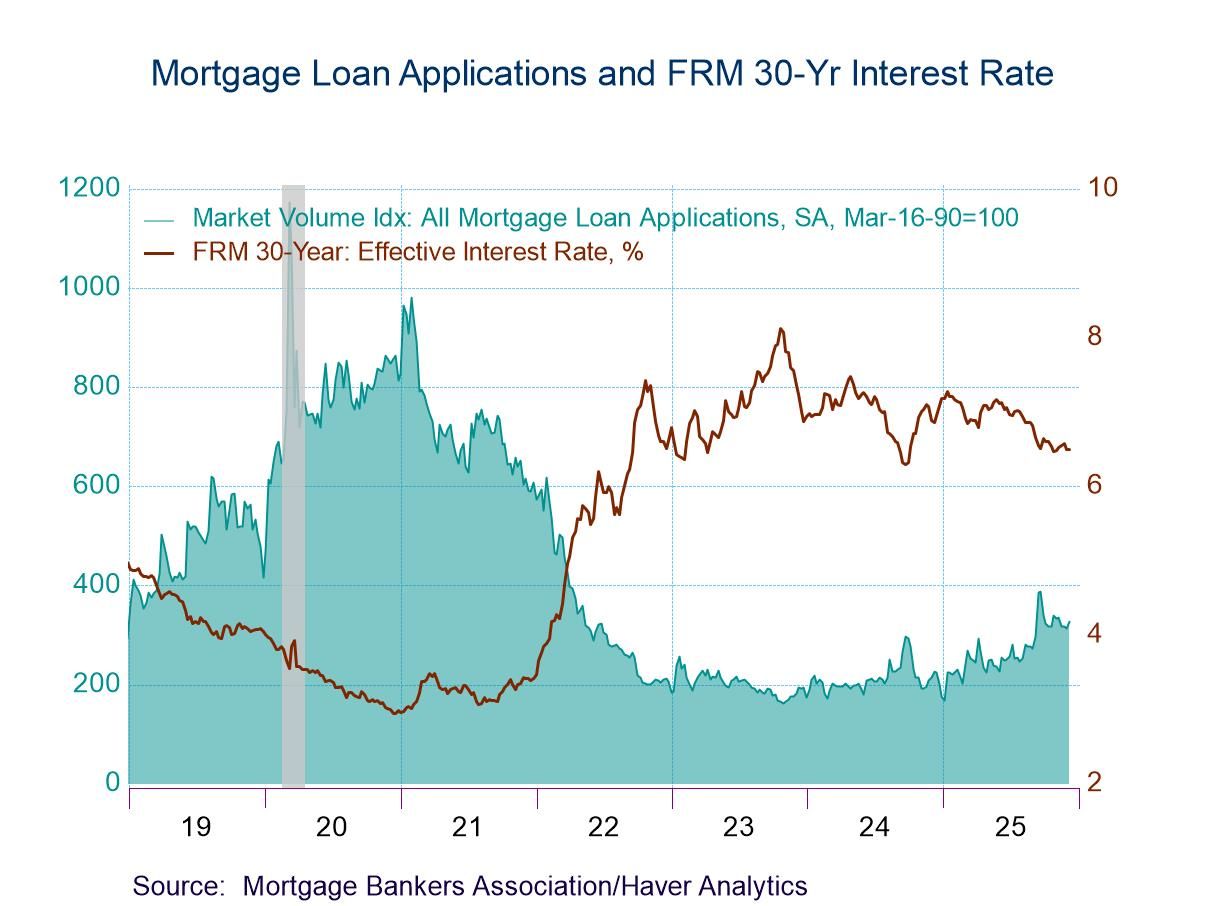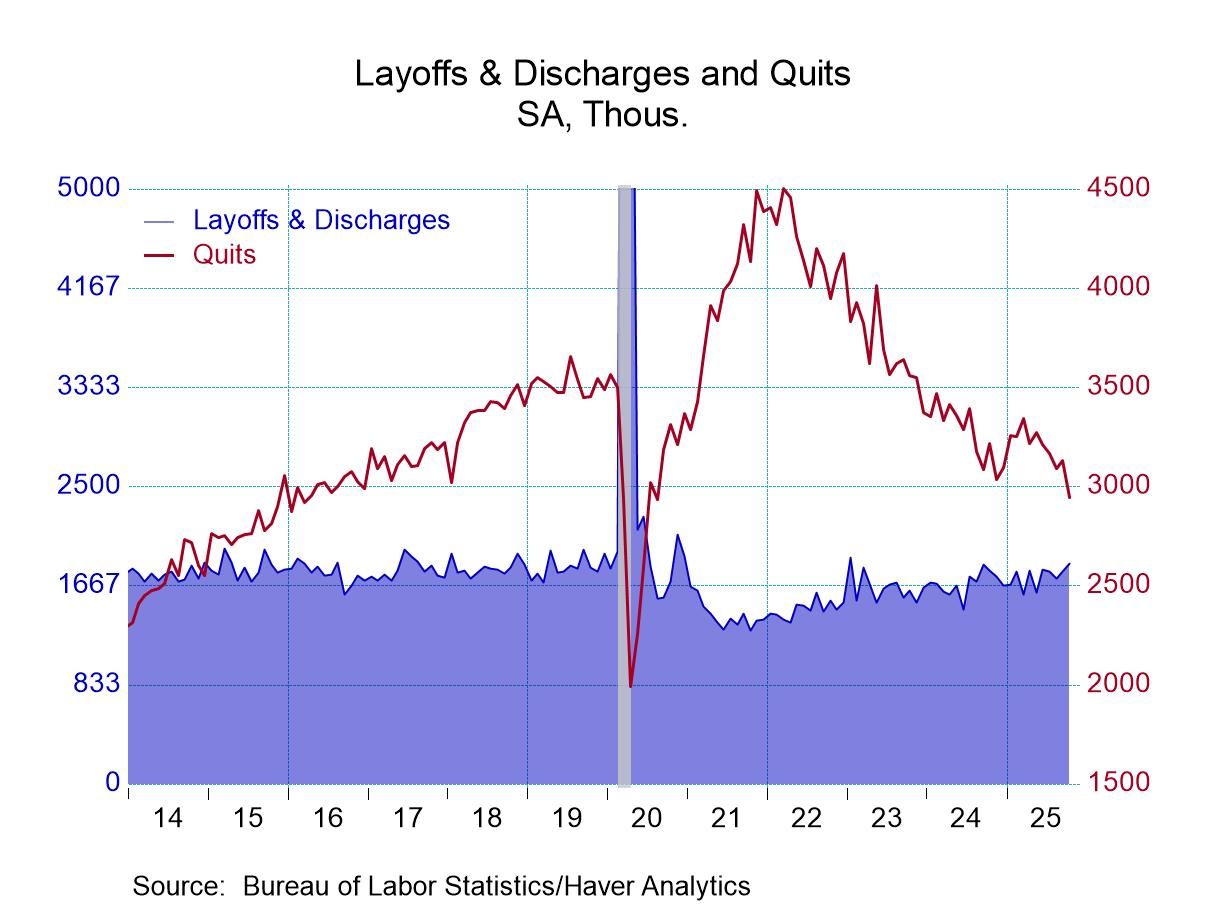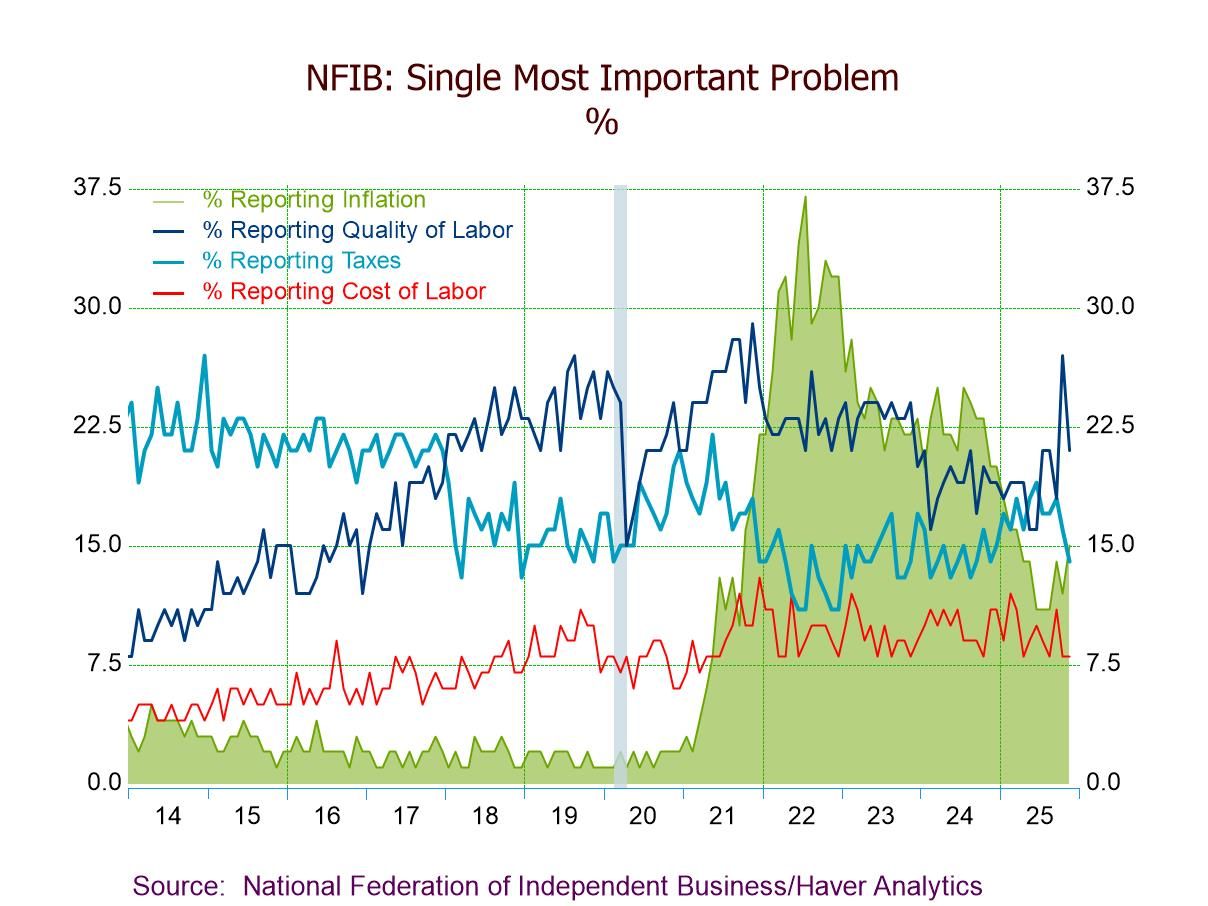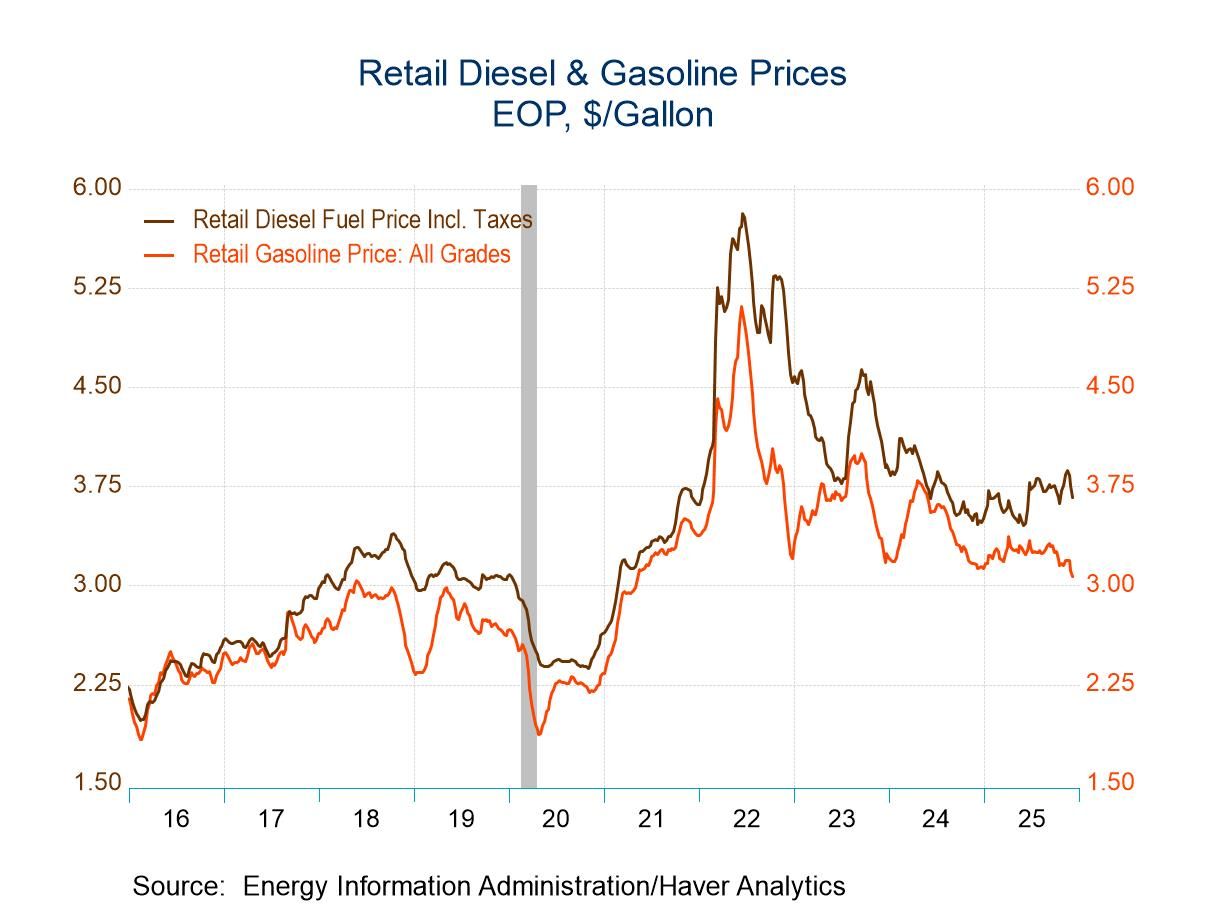U.S. Trade Deficit Widened in May
by:Sandy Batten
|in:Economy in Brief
Summary
- Trade deficit widened in May on decline in goods exports.
- Still, the real deficit in April/May points to net exports making a meaningful positive contribution to Q2 GDP.
- Both exports and imports declined in May.
- Series low trade deficit with China.


The U.S. trade deficit in goods and services (BOP basis) widened to $71.5 billion in May from a downwardly revised $60.3 billion in April (previously -$61.6 billion), according to the U.S. Census Bureau. The actual widening met the Action Economics Forecast Survey expectation. Exports fell 4.0% m/m (+5.3% y/y), the first monthly decline in five months, led by a 5.7% m/m decline in goods exports. Imports edged down 0.1% m/m (+3.3% y/y) in May after a 16.3% m/m plunge in April. Imports of goods have cooled markedly in the past two months after surging during Q1 as importers attempted to front run expected increases in tariffs.
The real (inflation adjusted) goods trade deficit widened to $92.5 billion (2017$) in May from $84.4 billion in April. The real trade deficit had widened to record levels during the first quarter with net exports subtracting 4.6%-points from Q1 GDP. The April/May figures put the real balance on course to narrow by roughly $150 billion in Q2 (at a quarterly rate), which would mean that net exports in the national accounts could add 2-1/2 to 3%-points to Q2 GDP.
The trade deficit in goods widened to $97.5 billion in May from $86.3 billion in April. Goods exports fell 5.7% m/m, the first monthly decline in five months. Exports of nonmonetary gold fell $5.5 billion (-56.4% m/m) while exports of finished metal shapes (which includes other forms of nonmonetary gold) fell $1.0 billion (-10.0% m/m). Both of these had surged in April, reflecting re-exports of previous nonmonetary gold imports that had risen markedly in Q1 in an attempt to front run expected tariff increases. More generally, exports of industrial supplies and materials slumped 13.3% m/m in May after a 16.1% m/m jump in April. Capital goods ex autos declined 3.1% m/m, and food exports fell 2.5% m/m, the fifth monthly decline in the past six months. In contrast, auto exports rebounded, rising 3.6% m/m, but failed to come close to reversing the 21.5% plunge in April. Exports of nonfood consumer goods ex autos posted a solid 6.9% monthly gain after having declined in each of the preceding two months.
Imports of goods edged down 0.1% m/m (+2.8% y/y) in May on top of a 19.9% monthly plunge in April, indicating that the surge in imports in Q1 ahead of expected tariff hikes has run its course. Auto imports jumped 10.3% m/m after a 19.9% monthly decline in April. Imports of “other” goods rebounded 8.4% m/m in May following a 3.3% m/m decline in April. In contrast, imports of industrial supplies and materials fell 1.8% m/m, the fourth consecutive monthly decline. Imports of nonfood consumer goods ex autos fell 5.7% m/m on top of a 32.0% drop in April. Food imports posted a small monthly decline while imports of capital goods ex autos posted a small increase.
The services trade surplus narrowed marginally to $25.99 billion in May from $26.05 billion in April. Exports of services slid 0.2% m/m after a 2.2% monthly increase in April. Exports of transport services fell 2.0% m/m, the third monthly decline in the past four months. Travel exports declined 1.8% m/m, the fourth monthly decline in the past five months. In contrast, maintenance services exports rose 2.1% m/m; exports of insurance services increased 1.5% m/m; exports of intellectual property rose 0.9% m/m; and construction service exports gained 1.4% m/m. Services imports declined 0.2% m/m in May, the first monthly decline in three months. Imported transport services fell 3.3% m/m, the fourth monthly decline in the past five months. Travel imports declined 1.0% m/m, also the fourth monthly decline in the past five months. In contrast, imported construction services jumped 3.9% m/m and imported intellectual property rose 1.6% m/m.
The U.S. goods trade deficit with China narrowed markedly to a seasonally adjusted $14.0 billion from $19.7 billion in April and $24.2 billion March. This is the smallest monthly deficit with China in the history of the series, which dates back to 2009. Exports to China plunged 19.9% m/m while imports from China plummeted 26.3% m/m. The trade deficit with the European Union widened to $22.5 billion from $17.9 billion in April. The trade deficit with Japan narrowed marginally to $5.77 billion in May from $5.81 billion in April.
The international trade data, including relevant data on oil prices, can be found in Haver’s USECON database. Detailed figures on international trade are available in the USINT and USTRADE databases. The expectations figures are from the Action Economics Forecast Survey in AS1REPNA.


Sandy Batten
AuthorMore in Author Profile »Sandy Batten has more than 30 years of experience analyzing industrial economies and financial markets and a wide range of experience across the financial services sector, government, and academia. Before joining Haver Analytics, Sandy was a Vice President and Senior Economist at Citibank; Senior Credit Market Analyst at CDC Investment Management, Managing Director at Bear Stearns, and Executive Director at JPMorgan. In 2008, Sandy was named the most accurate US forecaster by the National Association for Business Economics. He is a member of the New York Forecasters Club, NABE, and the American Economic Association. Prior to his time in the financial services sector, Sandy was a Research Officer at the Federal Reserve Bank of St. Louis, Senior Staff Economist on the President’s Council of Economic Advisors, Deputy Assistant Secretary for Economic Policy at the US Treasury, and Economist at the International Monetary Fund. Sandy has taught economics at St. Louis University, Denison University, and Muskingun College. He has published numerous peer-reviewed articles in a wide range of academic publications. He has a B.A. in economics from the University of Richmond and a M.A. and Ph.D. in economics from The Ohio State University.






